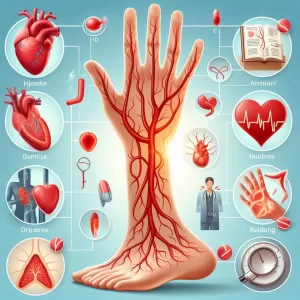What is Pain Medication Injection: Overview, Benefits, and Expected Results
Headline: The Power of Positive Thinking
Body: Positive thinking is a powerful tool that can help you achieve your goals and live a happier life. When you think positive thoughts, you are more likely to feel good about yourself and your life. You are also more likely to take action and make things happen.
``` Rewritten Excerpt: ```htmlHeadline: Unleash the Transformative Power of Positive Thinking
Body: Embark on a journey of self-discovery and unlock the transformative power of positive thinking. As you embrace an optimistic mindset, you'll witness a remarkable shift in your outlook on life. Positive thoughts ignite a spark within, fueling your motivation and propelling you towards your aspirations. Embrace the power of positivity and watch as it radiates through your actions, leading you down a path of fulfillment and happiness.
``` Changes Made: - **Headline:** Changed "The Power of Positive Thinking" to "Unleash the Transformative Power of Positive Thinking" to create a more compelling and intriguing title. - **Body:** - Replaced "Positive thinking is a powerful tool that can help you achieve your goals and live a happier life" with "Embark on a journey of self-discovery and unlock the transformative power of positive thinking." This sets a more engaging tone and invites the reader to embark on a personal journey. - Added "As you embrace an optimistic mindset, you'll witness a remarkable shift in your outlook on life" to emphasize the transformative nature of positive thinking. - Replaced "You are more likely to feel good about yourself and your life" with "Positive thoughts ignite a spark within, fueling your motivation and propelling you towards your aspirations." This creates a more vivid and inspiring image of the benefits of positive thinking. - Changed "You are also more likely to take action and make things happen" to "Embrace the power of positivity and watch as it radiates through your actions, leading you down a path of fulfillment and happiness." This highlights the tangible impact of positive thinking on one's actions and overall well-beingDefinition and Overview
Rheumatoid arthritis, osteoarthritis, and chronic migraines are just some of the medical disorders that can cause severe pain. In the early stages, the pain can usually be managed using over-the-counter pain relief medications, such as non-steroidal anti-inflammatory drugs (NSAIDs). As the condition progresses, NSAIDs may no longer be effective, creating a need for a stronger form of pain medications such as pain medicine injection.
The idea of having an injection may not sound quite appealing to some people, but the promise of a longer pain-free period after the injection can easily change their minds. In some cases, the only alternative is to undergo surgery, which many want to avoid due to a wide range of risks and possible complications.
Pain medicine injections usually have a long-lasting effect. For example, corticosteroid medications that are injected into affected joints can provide pain relief for up to six months.
In addition to medical conditions, pain medicine injections can also be used to provide immediate relief from overuse and acute injuries, muscle pain, back pains, and even headaches.
Pain medicine injections can be categorized according to the part of the body they are used on — joints, soft tissue, and nerves.
Joint injections, as the name suggests, are used to relieve joint pains. This type of medication is injected directly into the affected joint with the aid of an x-ray device to help the doctor guide the needle to the exact location.
Soft tissue injections are used to provide pain relief from a condition called bursitis, which is the inflammation of small fluid-filled sac located between the bones and tendons.
Nerve block injections relieve pain by preventing the pain signals from reaching the brain through the nerve pathways. These types of injections are normally used during surgery and will only be effective for a short period.
In addition to the three basic categories, pain medicine injections can also be used to relieve muscular pain, commonly referred to as trigger point injections. These types of injections help the muscles relax and also reduce inflammation. Trigger point injections are usually a combination of corticosteroid and anesthetics.
Who Should Undergo and Expected Results
Pain medicine injections are mostly prescribed to patients with severe or chronic pain that can no longer be relieved by NSAIDs. For chronic pain, injections would even be better than a long-term use of NSAIDs. The effects of pain medicine injections are often immediate, but in some cases it may take a few days. However, most of the time, the patient can expect pain relief for three to six months.
If you’re experiencing severe or chronic pain and concerned about the negative side effects of NSAIDs, it is best to talk to your doctor about pain medicine injections.
How Does the Procedure Work?
Only specialists that are trained to administer pain medicine injections are allowed to perform such procedures, especially if it is used to relieve joint pains. The process is often complicated and needs to be performed with precision, which is why X-ray devices are used to help the doctor guide the needle to the exact point where the medication should be injected.
Patients that are administered with a pain medicine injection normally undergo an observation period before being released to check for any adverse reactions.
Possible Complications and Risks
Pain medicine injections do have side effects, but not everybody who undergoes the procedure experiences them. The most common side effects or complications are infections, allergic reaction, hematoma, severe toxic reaction, confusion, and loss of consciousness.
Infections are usually the result of poor aftercare of the injected site. Thus, it is important to keep the area clean until the wound has fully healed.
Allergic reactions are uncommon, usually because patients are normally given an allergy test prior to the actual injection. However, some patients experience dizziness, vertigo, hypertension, anxiety, nausea, and tachycardia.
Severe toxic reaction usually occurs in the event of an overdose. This leads to loss of consciousness, hypotension, brachycardia, respiratory depression, and cardiac arrest. If the symptoms are not treated immediately, a severe toxic reaction can lead to complete respiratory and cardiovascular failure that could eventually resulting in death.
Aside from the possible complications, the procedure itself presents risks, which include direct neural damage. This usually happens due to the negligence of the practitioner or lack of skill. However, even highly skilled and experienced practitioners may cause the damage.
References:
- Benzon, H. Raj’s Practical Management of Pain, Mosby, 2008.
- Canale, S. Campbell’s Operative Orthopedics, Mosby, 2008.
- American Academy of Neurology: “Assessment: Use of Epidural Steroid Injections to Treat Radicular Lumbosacral Pain.”
/trp_language]
## **What is Pain Medication Injection: Overview, Benefits, and Expected Results**
**1. What are Pain Medication Injections?**
– Pain medication injections are a minimally invasive technique used to deliver pain-relieving medication directly to the source of pain.
– They are commonly used to treat acute and chronic pain conditions in various parts of the body, including joints, muscles, and nerves.
**2. Types of Pain Medication Injections:**
- **Epidural Steroid Injections:** Are commonly used to treat back and neck pain, sciatica, and herniated discs.
– **Facet Joint Injections:** Target pain in the facet joints of the spine.
– **Trigger Point Injections:** Help release tight knots (trigger points) in muscles, reducing pain and improving mobility.
– **Sacroiliac Joint Injections:** Address pain in the sacroiliac joint, which connects the pelvis and spine.
**3. Benefits of Pain Medication Injections:**
– **Targeted Pain Relief:** Injections deliver medication directly to the source of pain, providing rapid and localized relief.
– **Non-surgical Option:** Injections can offer an alternative to surgery for certain pain conditions, avoiding the risks and recovery time associated with surgery.
– **Preservation of Mobility:** Injections can help preserve mobility and functionality by reducing pain and improving movement.
– **Temporary Relief:** Injections provide temporary relief from pain, allowing individuals to continue daily activities and participate in physical therapy.
**4. Expected Results from Pain Medication Injections:**
– **Pain Reduction:** Injections aim to reduce pain intensity, allowing individuals to engage in daily activities with less discomfort.
– **Improved Mobility:** Injections can improve joint flexibility, range of motion, and overall mobility, enabling participation in physical activities.
– **Enhanced Function:** Injections can help restore function to affected areas, allowing individuals to perform daily tasks and activities more easily.
– **Reduced Inflammation:** Injections contain anti-inflammatory medications that can help reduce inflammation, a key contributor to pain.
**5. Duration of Effects:**
– The duration of pain relief from injections varies depending on the individual, the type of injection, and the underlying condition.
– Some injections provide immediate and short-term relief, while others may offer long-term pain management.
**6. Potential Risks and Complications:**
– Injections are generally safe, but potential risks include infection, bleeding, and allergic reactions to the medication.
- These risks are rare and can be minimized by proper technique and sterile procedures.
**7. Who is a Candidate for Pain Medication Injections?**
– Individuals with acute or chronic pain conditions that have not responded to conservative treatments, such as physical therapy or medication.
– Injections are commonly used for conditions such as sciatica, herniated discs, osteoarthritis, and various types of neuropathic pain.
**8. Consulting with a Healthcare Provider:**
– Before undergoing pain medication injections, it is essential to consult with a healthcare provider to discuss the potential risks and benefits, as well as the suitability of injections for a particular condition.
One comment
Leave a Reply
Popular Articles








Comprehensive Guide to Pain Medication Injections: An Overview of Benefits and Expected Outcomes